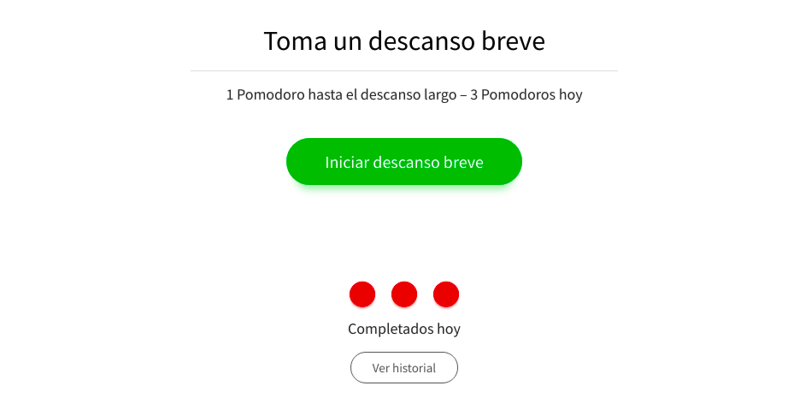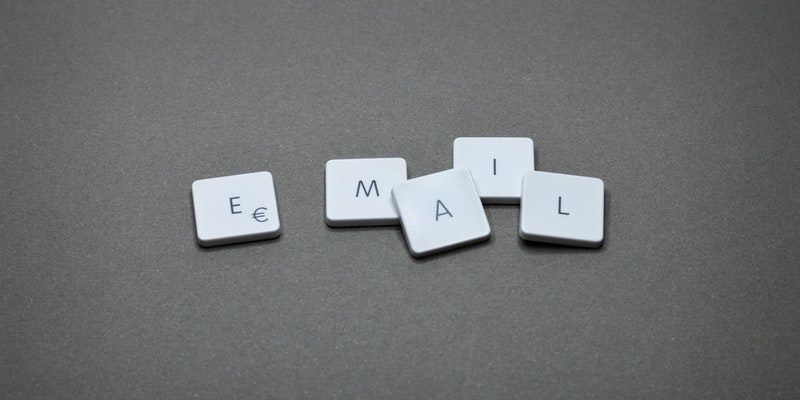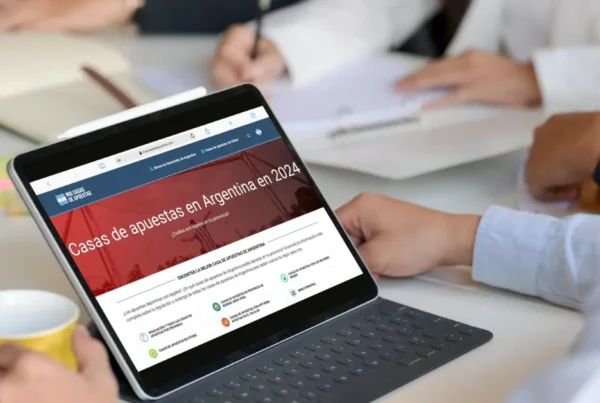I believe that I have read in these years almost everything that has been written about time management. At the end of the day, it is the most valuable thing we have and it has always seemed important to me to take advantage of the most precious resource.
The truth is that, as often happens, the vast majority of time management techniques and systems taught do not work. However, there are a few that do.
Any complicated time management technique or system, or anything else, is doomed to fail. It is because of that, what works is always simple to understand and easy to apply.
So you don't have to also read the thousands of books on time management, or spend your money on the good handful of seminars out there. These are the 20 most effective time management techniques.
Interesting detail, in fact, it's not about time management. Time is what it is and we cannot do anything to have more, it is a matter of manage our energy and motivation, and that is the first thing we have to understand.
1. Understand the true nature of time management

We call it time management, but in fact it's all about energy management. We all have the same time, there are 24 hours and we will not be able to add another second. The question is what we do with those hours and everything will depend on the energy we have.
If we cannot get out of bed, we are facing the PC with dark circles, stress eats us and motivation is on the ground, it does not matter that we have 50-hour days, we are going to lose them anyway.
That is why most of the time management techniques that do work contribute to a good management of our personal energy.
Filled with it and motivated, we can accomplish much more than we think in an hour. Without that care of energy, no matter how much time we are given, we will lose it distracted in social networks, or busy in those tasks of little value that rob us of time and morale.
2. Do only one thing at the same time

If you have followed at least Resources for SMEs, you will already know that multitasking kills productivity and time management. Our brain is not manufactured to do two things at the same time, even when it seems to us. It is an illusion, what he does in those moments is constantly switch from one task to another when we are with two at the same time, and that is exhausting and a mediocre job.
That is why the most effective productivity and time management technique is always dedicate ourselves to a single task and not leave it until we have finished.
Definitely, many tasks will be too large to do all at once. For that, we will also have a time management technique.
3. Remove all possible distractions

This is probably the most important time management and productivity technique today. We live in the age of the care economy. It is the most valuable thing and what everyone strives for: televisions, networks, mobiles ... Especially the latter is a weapon of mass distraction terrible.
Es por ello que, si deseamos dedicarnos solamente a una tarea, que esta be la importante y que la terminemos, we must remove all traces of distractions.
Personally, I have my smartphone in another place when I work and, in general, always in silence. That makes it possible for me to ignore the notifications and in this way I look at the smartphone when I want and not when he rings the bell so that I behave like a Pavlov dog.
The battle against the smartphone is increasingly difficult. There is an enormous amount of money, experts and behavioral engineering put into that thing that knows how to draw us to it and uses all the dirty tricks for this.
That is why, it is best not to have to fight against that temptation because we are going to lose. So basically we get it out of the way and without temptation there is no distraction.
In the same way, we do not have notifications on the PC, we close the door if we work with more people or, in case we cannot do it, we ask that no one interrupt us until a certain time if it is not very urgent.
4. "Eat the frog" first thing in the morning

Interestingly, one of the time management techniques that work is one of the first I learned. None other than a book by the legendary Brian Tracy called exactly that way, Eat the frog.
The technique is simple and it involves do the most important task first. Some say the most difficult task, hence the swallow the frogBecause if you do that first thing in the morning, what remains on the list will always be easier for you and will seem like a downhill road.
However, it makes no sense to be guided by what is difficult if this is not also the most important thing. Sometimes it will coincide and sometimes it will not. The question to understand which task is the first to do is simple. Just answer this question:
What task that I have pending would bring more benefit to my business?
That is the one that we have to put first on our list (we will see how to make a proper list) and we must start with it, without excuses and without buts ...
5. Plan leisure for optimal time management

One of the most amazing time management techniques is to plan on our calendar the hours of leisure and what we will do in them.
Time to read, to go for a walk, to go to the movies, to be with family or to stay with friends… I don't remember who I read it for the first time (really, there have been so many books already…) but it seemed curious and very effective.
What you do here is plan your rest and leisure and, around it, you already build the rest of the work on the calendar. And of course, we respect that leisure.
This technique works because, as we have already said, time management is, in fact, energy management. How do you get that energy and do you have a full tank? Resting, disconnecting and dedicating yourself to leisure.
Con esta técnica, damos a ese ocio la relevance y el tiempo que le corresponde, de manera que nos aseguramos tener suficiente combustible. En serio, algunos de los emprendedores más exitosos utilizan esta técnica, debido a que comprenden la verdadera naturaleza de la gestión del tiempo.
6. The Pomodoro Technique

The Pomodoro Technique is an application of the timeboxingIn other words, to set ourselves a limited time of work and then take another limited time off.
Applying the Pomodoro technique is very easy:
- We choose the task to work on.
- We get on the clock a notice within 25 minutes.
- We work without distractions until the warning sounds.
- We rest during a 5 minute interval.
- We repeat another 25-minute work interval.
- After 4 pomodoros of 25 minutes, we pause longer than 20 minutes.
To facilitate the task, there are a multitude of Pomodoro applications that we can install, for example, on our phone (which at least helps us because it will distract us most of the time).
If you have an Android smartphone, this is very good. If you have an iPhone, I personally like this.
As you will see, they are easy and do one thing well, following the time management and productivity precepts that we are looking at here. There are Pomodoro applications that want to go further and, at the same time as a timer, offer to-do lists and other features. Personally, I would just use the timer and that's it. They're not generally good at everything and we'll take a look at which time management app has been the most effective for me all these years.
7. Conscious rest

I'm going to be heavy one more time. Time management is energy management and to fill the tank we need rest. That means conscious rest in those breaks we take.
In fact, the key to productivity is working hard at the times allotted for this and rest even harder at those other times. Because the quality of our work will depend on the quality of rest.
Conscious rest means that we get up from work, walk a bit, lie down or even close our eyes for a moment and let ourselves go. If we take a five or ten minute nap, that would even be ideal. If we have a timer that warns us, we can not worry about it getting out of hand.
But what do we really do with the breaks? As we do not quite understand the need for conscious rest, we use them to take a look at emails, the Internet, social networks or anything else on the damn phone. Y that does not disconnect our mind, but rather absorbs more of our precious energy, almost always vampirized by irrelevant things that do not end up adding any value.
Reading (a book, better if it is fiction) is allowed because even proven to reduce stress the most. But let's start treating rest for what it is, something sacred to which we must consciously dedicate ourselves.
8. The proper task list

There are many ways to make a to-do list, but only one that works when it comes to time management. Our list should be:
- Very brief. I'm talking about 3 important things (no joke) or, at most, 5. But I'm already overdoing it.
- Sorted by relevance. By asking the question that we have already seen about what is the task that gives the most benefit to our business.
- Make it a list of results to be achieved and not a simple "list of things". This is a common failure. I do not put on my list: «Write report», like that, in a diffuse way, but «Write 2 pages of the report». Something concrete that allows me to know when I have finished the task and obtained the exact result that I want to obtain.
I regularly make that list even on paper. Later, for other tasks such as responding to this or that email, remembering the meeting, etc., I use the following.
9. Use a calendar application for our time management

Also I am guilty of using every task management application that has been created. They all follow the same pattern:
- They assure that, this time, they are the definitive application that you are going to use permanently.
- You start out with enthusiasm and it takes a long time to move data from the old application to the new one app.
- You start using it a day or two, it doesn't seem like it's bad.
- You start to get off the hook on the third day, since it seems to give more work than it takes away, as it happens with all of them.
- On the sixth day you wonder which of all the applications you used.
- You give up, having a lot of fragmented information in various applications, at the same time having used valuable time for nothing.
- A new time and task management application comes out that starts the cycle from point 1.
Personally, I have already forgotten about that.
The best (not ideal, because that does not exist and will not) is use a Calendar app. Personalmente, uso el calendario de Google. Siempre sincronizado, disponible desde cualquier dispositivo, me recuerda todo lo esencial y me sirve para guardar lo que no debo olvidar y aplicar técnicas como la de la gestión del tiempo libre.
10. Take care of the "golden hours"

It turns out that it is true that we all have the same hours, but not all those hours are the same. There are some much more valuable than others. Which?
Science has shown that we are more productive and creative in the early hours of the morning. That is why, it is necessary to jealously guard those hours and block them to dedicate them to the most important tasks.
We must consider these hours as our "golden hours." Gold is the most valuable and everyone wants it. That is why, if we fall into the smartphone trap, we will see emails, messages or that funny thing on social networks, which will end up wasting another hour.
We must not give our gold to anyone except the most valuable, to what else is going to advance our own projects.
Either we work on taking our agenda one step forward, or we work on taking others' one step forward.
11. Batch management of the least important

Hablamos de tareas importantes y «horas doradas» en nuestra gestión del tiempo, pero esto es la vida real. Y está hecha de otras persons, con sus emails, llamadas, facturas, obligaciones administrativas, pequeñas tareas indispensables y demás… Y eso además hay que hacerlo.
Even when we delegate what we are not experts in, such as taxes, for example, I do not know how to completely take away others or the small low-value tasks that we cannot avoid.
But they can be administered in batches and at the right time..
That means when we've done those 3 important tasks for the day, we start answering emails or making batch calls. Instead of stopping to answer an email, we get to a certain time (for example, 12 noon) to answer everyone.
If necessary, we put an automatic response notice saying when you can expect our response, so that you are not left with the uncertainty.
The essential but not vital tasks, always after the important ones and in batches.
12. Do some physical activity
Personally, I spend too much time sitting at a PC. Which negatively influences productivity because the amount of energy you have is closely related to the physical activity you do.
That is why, it is not only essential to carry out this physical activity many times and get in shape (which will give us a larger deposit of energy), but also to include it in our day to day.
Getting up and walking during breaks, stretching a bit and even doing a little physical activity that gets the blood flowing again in those minutes between tasks is an example.
Walking is, in fact, one of the best things we can doNot only to fill us with energy, but also to solve problems, be more creative, reduce our stress and, literally, be happier.
And it is not the typical thing that is said because it sounds good, but because science has shown.
13. Knowing how to say no

How to have more time for what is important? Knowing how to say no to others. It is that simple and, at the same time, that complicated, because it is one of the most difficult things to put into practice.
At first, in my personal case, the truth is that the inability to say that it was not almost pathological. But it is an instant way to free up more time.
Lea este contents si quiere aprender cómo decir que no de manera más efectiva.
14. The 2-minute rule

When I started out on this, David Allen's GTD system was all the rage (imagine years ago). Like almost all productivity systems, in the end, instead of freeing you from work, they add.
Systems as detailed and rigid as GTD are fundamentally to blame for this. But it is true that I had 2 points that have still stuck with me and I apply so many years later. They are definitely your 2 easiest points to put into practice and remember, a sign that the only techniques that really work are always like this.
The 2 minute rule says that:
"If we come across a task that we can solve in 2 minutes or less, we do it right then".
We do not put it for later and we do not plan it. We answer that message with a yes or no, we give the go ahead, we resolve the brief question or whatever ... and we continue with what is important.
15. The rule of touching "the paper" only once

The other time management technique that stuck with me from the GTD system is that "we play the paper (the task) only once." In other words, when we find it for the first time we do it if it reaches the 2-minute rule, we plan it for a certain moment on the calendar if now is not the moment (or it is not the most important), we delegate it to another Or, basically, we learn to say no and discard it.
But we are not picking up the paper, dying about it, putting it off for later, picking it up again and thinking, dying about it, etc, etc. With that, we do not solve anything and the task remains in the background, absorbing our energy and motivation.
16. Have a site dedicated to work that we can isolate

It usually happens to those of us who are entrepreneurs and at the same time we almost always work remotely. That we do it anywhere, that we throw ourselves on the sofa with the laptop when we are at home ...
That gives a feeling of precariousness and that we don't have a "real job." That is why the most productive thing is to have a separate dedicated space. It can be a home office, so when we walk in there it works and nothing else.
We keep that corner clean, professional, oblivious to other things, with the opportunity to isolate it from the outside (with a door or even headphones if we only have one corner).
Much of time management and productivity is a question of habit. Having a dedicated space is a contextual "trigger" that helps trigger that work habit. All professionals have always had a dedicated space, they have built it because they consider that their work is essential and deserves a small temple.
17. The time trial

The best productivity techniques for me are "forced productivity." In other words, those that put a little (positive) stress on carrying out this task.
One of them, which may sound silly, but is effective for personalities like mine (prone to rigidity), is to calculate how long a task is going to take (let's say 10 minutes) and set a timer with one minute less than we have thought (in this example, 9 minutes).
The challenge is to finish the task before the clock finishes its countdown. It seems like a game, and it would be nice if we took it like that (the gamification homework is not bad). It will encourage us with that pang of positive stress that sometimes we lack when doing things.
Even when it doesn't seem like it, most people do their best work when they feel a little pressure.
It is pure human nature, when the finance period ends or your boss has asked you for the report in an hour, you get on with it yes or yes. We will not always have that kind of incentive, especially if we work for ourselves, but we can try to emulate the positive part that works.
18. Divide large tasks

If distractions are the great enemy of our time management today, the second most important is procrastination, or that eternal leave for later something.
Postponing a task only serves to keep it in the background, vampirizing our energy and motivation.
Dividing large tasks into small tasks is the most effective technique for dealing with procrastination.
Thus, if within our small list of 3 important tasks we have a large one, such as finishing a multi-page report that we know will take time and effort, we break that elephant into small pieces.
Thus, instead of writing everything at once, we set ourselves the task of putting the title and the first two introductory paragraphs. Later we can put another task that is to specify the different points that the report will have, composing the skeleton of it. Later, our next task may be to perform one of those points, or two.
In other words, we are turning a large and diffuse task into many small, manageable and concrete tasks. Thus, we will not only decrease procrastination, but we will have a sense of achievement and progress by completing many small milestones.
19. Abandon

Winners never quit? Pure myth. The best ones quit all the time And, if we want optimal time management, we must also know when to leave.
Abandoning is saying no to ourselves, and that tastes doubly bad for us. We have to say no and at the same time receive a no.
But usually there are projects that go nowhere, that do not come out and that are only going to steal more and more time from us. So we have to release it for what is important. In order not to make mistakes when it comes to knowing when to abandon something or when not, read the content linked above.
20. Do something we like

Can't do something you hate all the time. They often sell us the nonsense of passion and freedom to undertake as if they were the only important thing, but their place is not first in line.
However, one thing is certain, doing something all the time that does not motivate us at all and we do not even like it, it is also the fastest way to end up burned.
So I'm not saying that we should follow our passion, but our job or business should like us, at least a little bit. If not, why even bother? Not only will we never be productive at something that makes us bitter, we will also never strive to do our best or treat customers the way they deserve.
That is why, for proper time management, we cannot have the feeling that we are wasting it on something that is withering us inside. Not only will we not do anything, it will make us miserable every minute.
So here they are. If you were to ask me what time management techniques work best, this is what I would answer.







